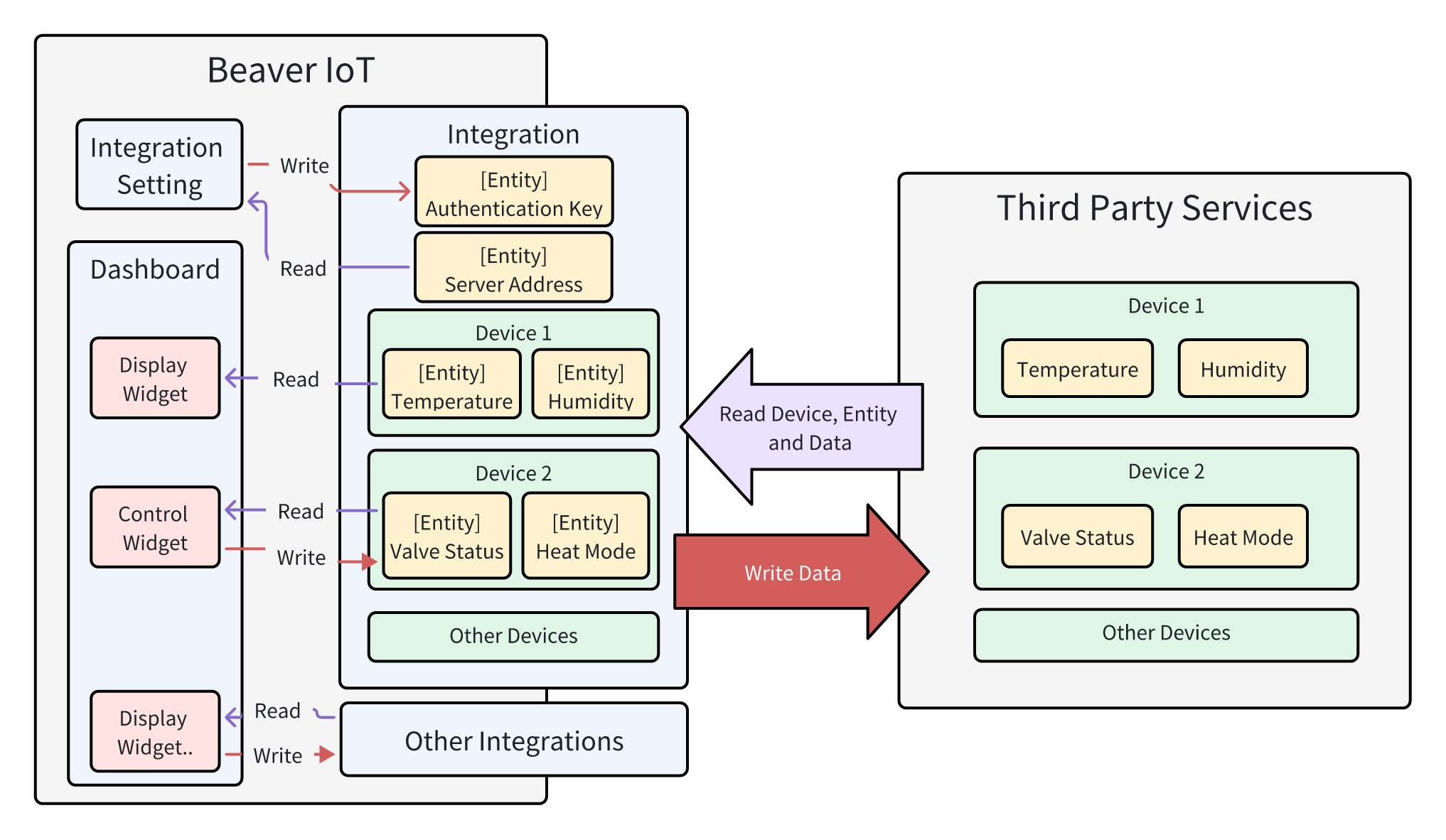Key Concepts
This topic describes the key concepts that you need to understand about Beaver IoT.
Concept Relationships

Integration
Integration is the main solution for Beaver IoT to interact with third-party services, devices or platforms and achieve device connectivity, device control and some functionality expansions, for example:
-
Integrate with weather forecast website to get the weather information of corresponding locations.
-
Get and update device list from third-party platforms via API or Webhook and sync to database of Beaver IoT.
-
Provide request URL to ask for third-party services.
Device
Device refers to a physical device or logical device which is defined and created by Integration.
- Every device only belongs to one Integration.
- An integration is able to define whether can add or deletes devices manually. If supported, users can go to Device page to add or delete devices.
Entity
Entity refers to an object to describe the attributes and characteristics of things in the real world, to which is the basic data carrier of Beaver IoT. Every entity should be pre-defined and in fact, the function of integration and device is defined by their entities.
- Every entity only belongs to one Integration or one Device.
- The entity includes current values and historical values.
- An entity supports to exist separately or has multiple sub-entities. But it only has two-level relationship.
- There are three entity types:
| Type | Description | Current Value | Historical Value | Example | ||
|---|---|---|---|---|---|---|
| Read | Write | Enquiry | Add | |||
| Property | The status or information of a device or an integration. | ✅ | ✅ | ✅ | ✅ | Temperature, Humidity, IP address, Key |
| Event | The notification that requires action or attention. | ❌ | ❌ | ✅ | ✅ | Button triggers, Temperature alerts |
| Service | A capability or method of a deivce or an integration which can be invoked. | ❌ | ❌ | ✅ | ✅ | Reboot, Open/close value, Connection validation |